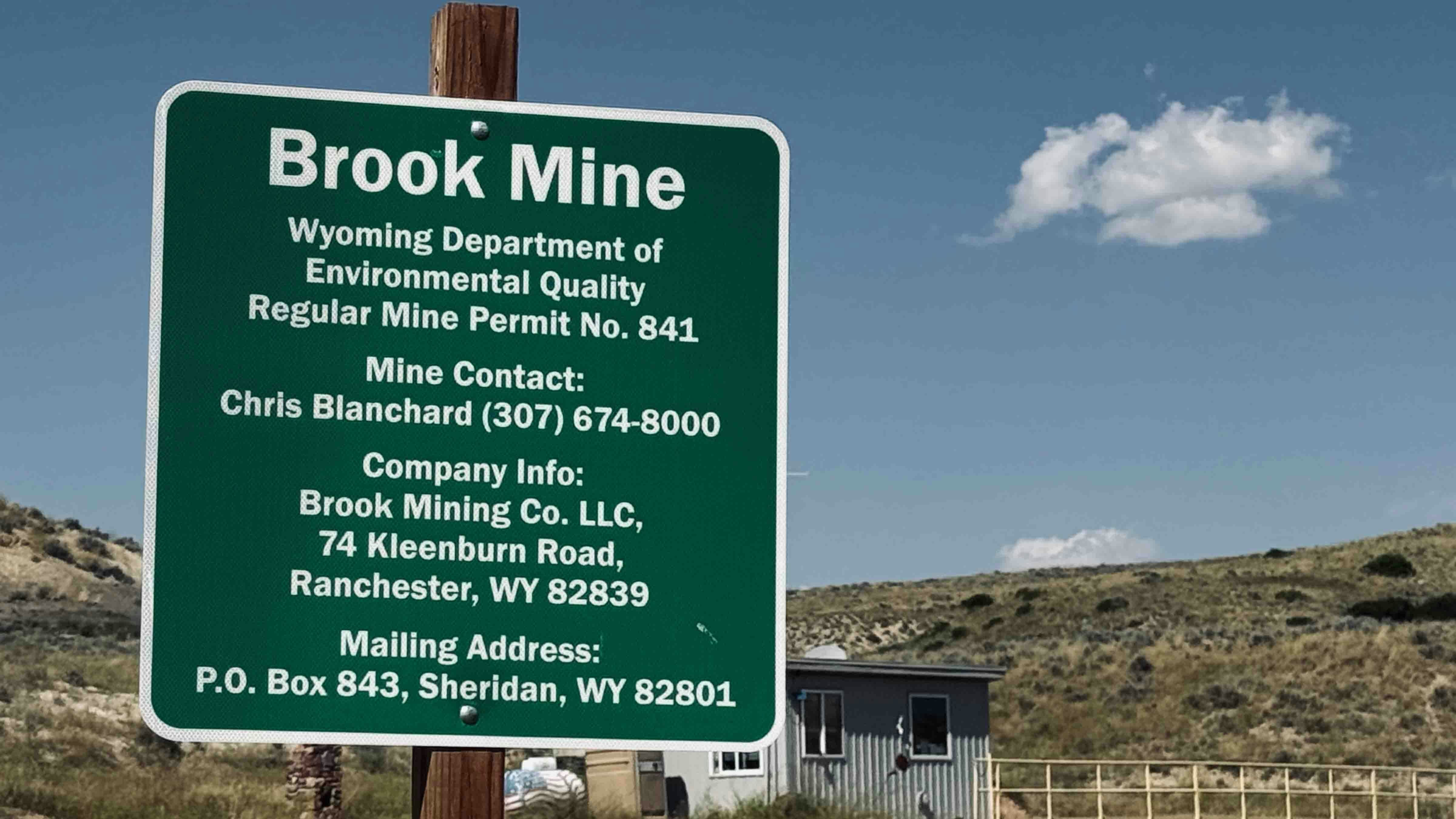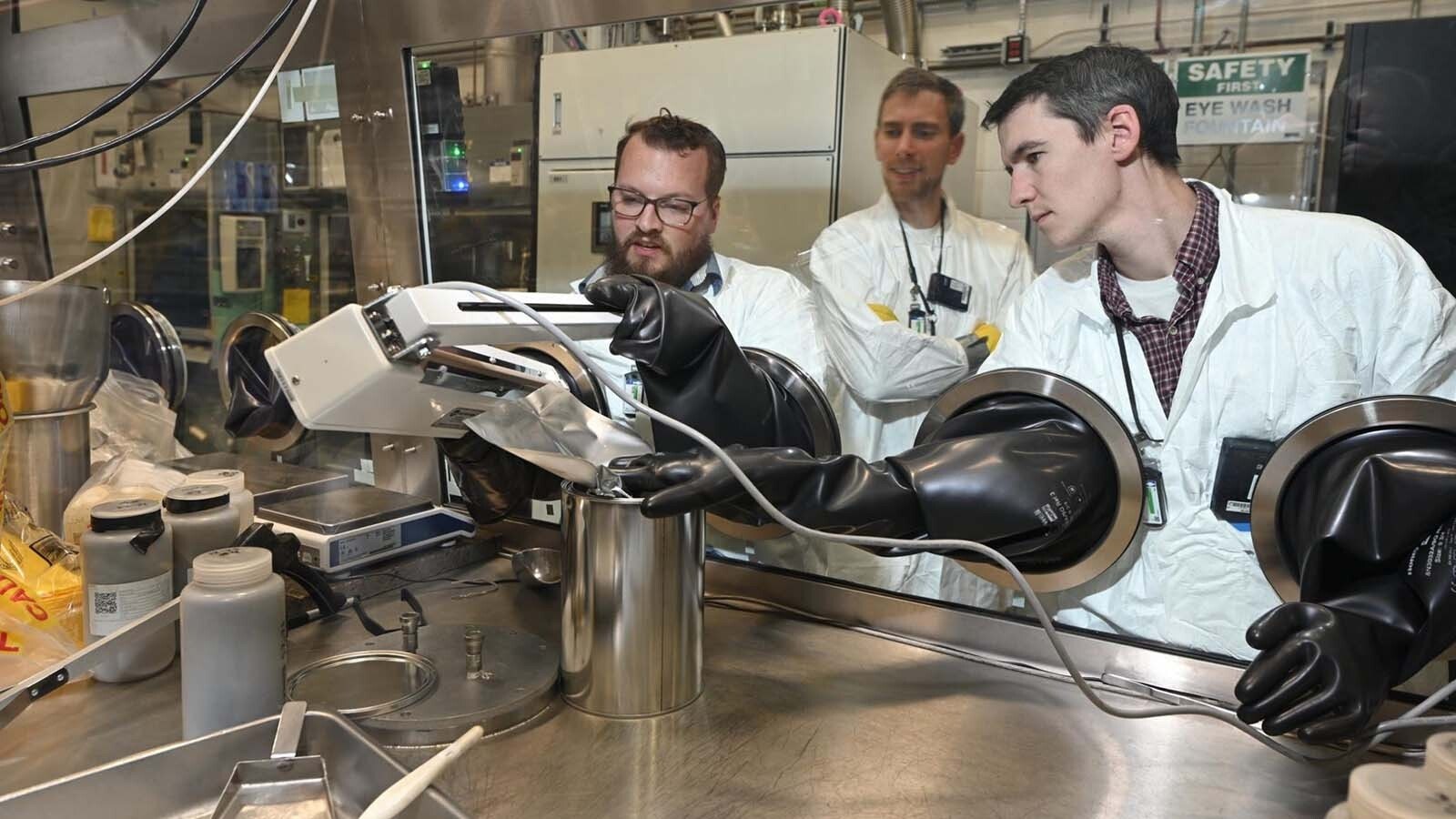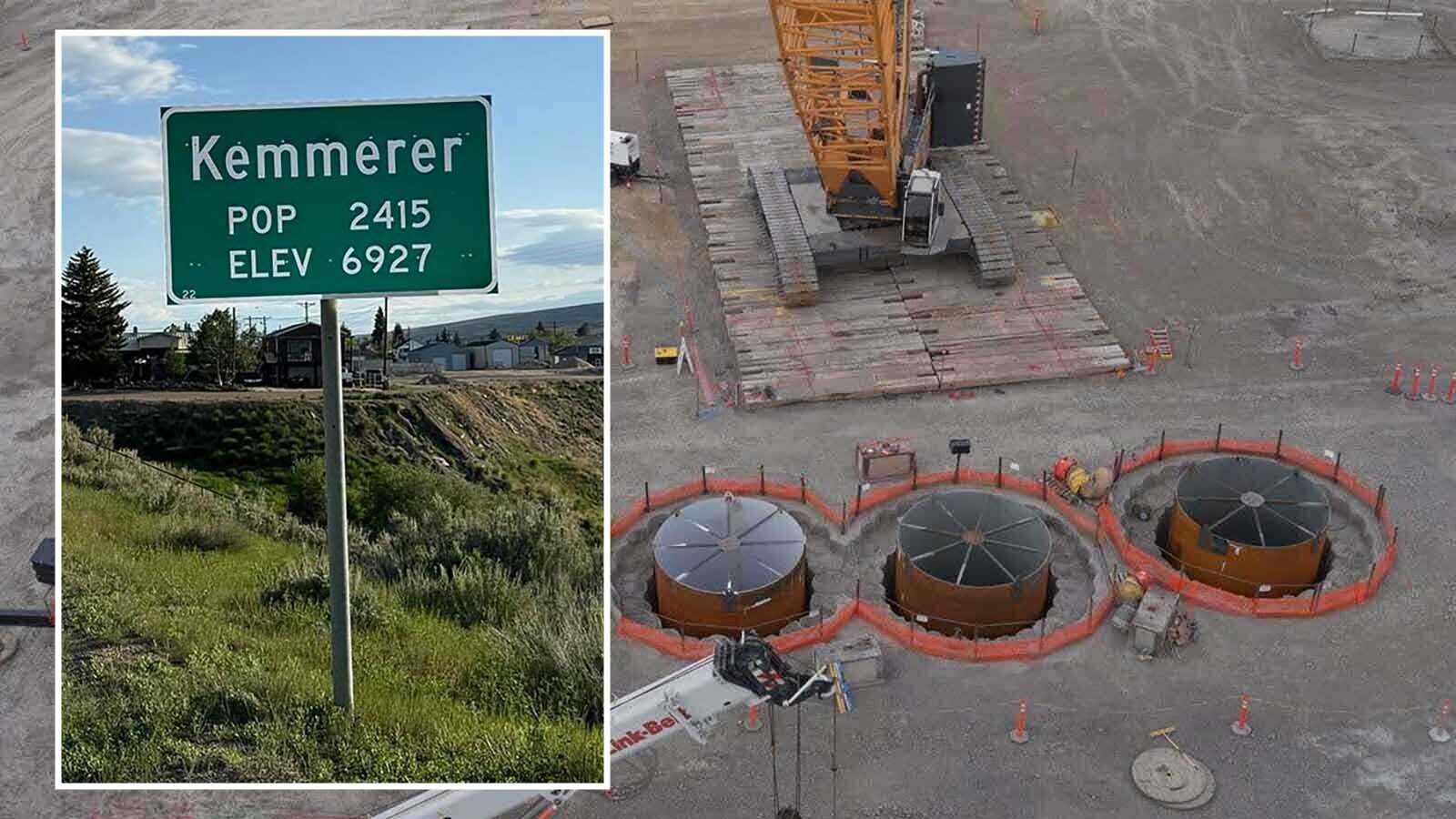RANCHESTER, Wyo. – The future of coal may not be as a fuel source for power plants to produce and provide electricity.
Drilling rig worker Zachary Christensen already knows this.
On Monday, Christensen, who sported a ZZ Top beard, stiff jeans and a t-shirt caked with grime and sweat, was drilling in 90-degree heat for test samples in an abandoned coal mine looking for signs of what could become an eventual mining bonanza.
Christensen took the samples collected and lined them up in neat rows in the tall rangeland grass behind his rig located in the middle of fields of purple-flowered nettle weeds and “clinkers,” or old piles of coal fused together over the years from lightning strikes.
The colored shades of clay and other materials collected by Christensen will eventually be hauled back to Ramaco Resources Inc.’s research facility a few miles away where they’ll help the East Coast metallurgical coal company determine the quality and kinds of critical rare earth magnets buried at different layers of strata below the foothills of the Bighorn Mountains.
Ramaco has already begun some initial digging to see what’s below the old coal mine covering portions of 16,800 acres, thanks to an initiative by the Pentagon’s military brass who began to worry over a dozen years ago that they wouldn’t have the strategic rare earth magnets to build their sophisticated hypersonic missiles and fighter jets needed to protect America.
The rare earths find in upstate Wyoming near Sheridan is considered one of the biggest in the United States, if not the world, according to Alex Moyes, head of critical minerals research for Ramaco, based out of Lexington, Ken.
“The rare earths are associated with coal,” Moyes told Cowboy State. Plus, he said, the soil, geologic formations and placement of the mine in the energy-rich Powder River Basin makes it the perfect spot to dig up the highest valued rare earths as compared to the nearly 5 million tons of coal that it currently scrapes out of the ground in central Appalachia, he said.
By the time the rare earths processing operation is in full swing in late 2026 or early 2027, Ramaco will be pulling between 1.5 million and 2 million tons of coal annually out of the old Brook mine.
The rosy outlook from Ramaco is in sharp contrast to the dominant coal players in the region who continue to report shrinking production figures. Indeed, coal is still kicking in this part of the Powder River Basin despite the seemingly constant drumbeat from today’s federal government that the industry’s days are numbered.
Ramaco’s rare earths will be extracted from the coal mined at the operation through a grinding, crushing and chemical process already approved by regulators with Wyoming’s Department of Environmental Quality.
Moyes thinks that Ramaco can get to high-quality rare earths in the Brook mine without removing a lot of topsoil and overburden, making the ore an even more valuable find due to cost savings.
The samples collected on Monday will help Ramaco make “surgical” digs through a variety of mining techniques for the valuable rare earth magnets that Ramaco wants, according to Moyes.
Early technical estimates have placed the rare earths find at $37 billion but no one knows for sure what is in the ground until Ramaco gets things rolling on building a plant to process the rare earth magnets.
Rig worker Christensen’s small role is to partially help people like Moyes and a team of research scientists at Ramaco’s nearby research facility – called iCAM, or its Innovation of Carbon Advancement of Materials – get a grasp on what’s in the ground, and where the deposits are located.
Things are progressing quickly at iCAM, where a team of roughly 15 research scientists, including Moyes who recently moved to Sheridan, are making plans to begin construction early next year on a $20 million pilot demonstration plant in the rolling hills surrounding the Brook mine site, according to Ramaco President and CEO Randall Atkins.
“We’re still defining exactly where we want to put it,” Atkins told Cowboy State Daily. “We obviously have this land that we own, as well as the site for the mine itself.”
The placement of the plant is shifting constantly based on the technical testing of the soil, he said.
“We may actually put it close to where we’re beginning to make the first mine cuts, at least for the pilot, and kind of bolt on the full commercial plant around the pilot,” Atkins explained.
The technical report on the rare earths that will be completed before the end of the year will help decide the plant’s location.
“For this project we have made a great deal of analytic assessments,” Atkins said.
Atkins said that construction on the pilot project will begin next spring, with an expected investment “north of $100 million" and the transition to a full-scale commercial processing plant by 2027.
The well-heeled Ramaco has the financial muscle to get the project in gear. New York City-based private equity firm Yorktown Partners LLC owns a 30% position in the company with the management team of Ramaco owning another fifth of the company’s total publicly traded shares.
“We could have another 100 people working here by 2027 or 2028,” said Atkins, a former investment banker with J.P. Morgan where he worked merger and acquisition deals in the energy sector.
A technical report analyzing what minerals are in the ground near the old Brook coal is expected to be completed later this year. That will give what Ramaco hopes is the best assessment yet of the value of the minerals, what kinds of minerals are in the ground, how deep they are and a first-time, back-of-the-envelope calculation on capital expenditures needed to dig it out.
The last assessment in May 2023 provided an optimistic outlook.
The next assessment is expected to show more good signs as the chemistry and geology is better understood – with estimates now placed at roughly 1.5 million pounds of rare earths in the Ranchester region, up from 800,000 last year. That estimate is expected to climb, Atkins said.
Atkins paid $2 million in 2011 for the old Brook coal mine buried in “soft dirt,” making it easier to claw out of the ground the rare earths than the “hard rock” where other operations are found. The rare earths in hard rocks must be crushed and processed in a more expensive way than what Ramaco is considering.
Coal Vision
Atkins has a vision for his iCAM campus, which is visible west of Interstate 90 with its sloped rusted corrugated metal roof. He wants it to become the Mecca for carbon research, like turning coal into carbon fibers, synthetic graphite and rare earths.
The campus, which has an iCAM-labeled monument rising out of an open field of grass adjacent to the Tongue River, recently attracted about 80 movers and shakers from across the carbon research field from the Department of Energy’s national laboratories and elsewhere, as well as key federal lawmakers from Wyoming and West Virginia.
It was an invitation-only gathering, Atkins said.
Atkins bills the annual privately held gathering as a “research rodeo.” The forum started in 2018 before it was paused during the pandemic.
At last week’s gathering, one of Ramaco’s cheerleaders was U.S. Sen. John Barrasso. The lawmaker told the private conference of dignitaries that “some in this country mistakenly believe that coal has no place in the future. They’re wrong.”
Atkins said that his company views coal as “carbon ore,” not just for burning in a power plant to generate electricity.
He described Ramaco’s strategy as making up a three-legged stool.
One application for coal is to power combustion at power plants, a second is to use metallurgical coal for steelmaking, and a third is to “produce or make rare earth elements.”
The latter strategy is the reason for the research campus built in Ranchester, said Atkins, who splits his time living where his corporate headquarters is located in Kentucky and the tiny community of Big Horn, Wyo.
“We took some of the technologies developed in the 1970s and have developed them for new ways to use coal,” Atkins said. “Coal is in a new carbon age.”
Pat Maio can be reached at pat@cowboystatedaily.com.















